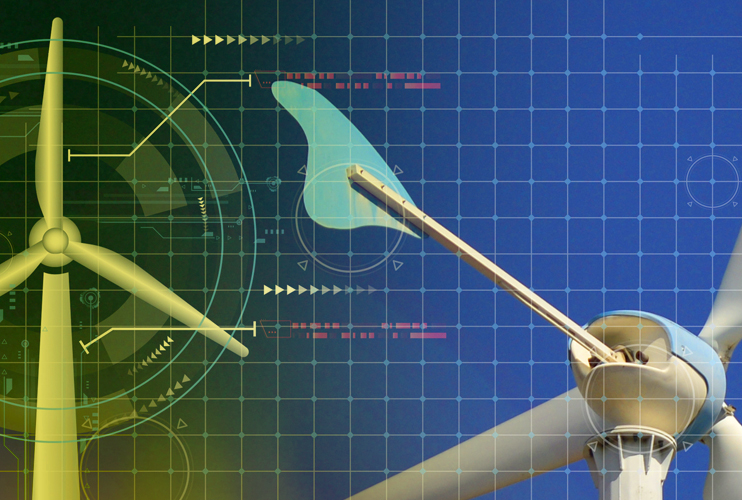Wind turbine blades were not built with their second act in mind. Designed to endure brutal wind shear, rain, and UV exposure for two decades or more, these blades are composite marvels—glass fiber-reinforced epoxy resin, lightweight and incredibly strong. But when they come down, whether TK or TK, what then?
That long-held oversight is catching up with the industry. Across the U.S., thousands of blades are reaching the end of their service life each year. By 2035, more than 40,000 are expected to be decommissioned. Traditionally, they’ve been landfilled, incinerated, or ground down for filler—options that are increasingly expensive, unsustainable, and, in some cases, legally restricted.
The environmental implications are significant, as these blades are composed of composite materials that do not readily decompose, leading to long-term waste management issues. Addressing this challenge necessitates innovative recycling solutions to prevent environmental degradation and promote sustainability within the wind energy industry.
The problem isn’t hypothetical. It’s piling up, literally.
Few places illustrate this better than Sweetwater, Texas, where a failed recycling venture has left behind a massive blade graveyard that spanned more than 30 acres. Towering stacks of cut turbine blades have sat idle for years, drawing complaints from neighbors and scrutiny from regulators. “It’s just a hazard all the way around,” one resident told Texas Monthly. For others, it’s become a breeding ground for mosquitoes—and rattlesnakes.
These kinds of scenes are exactly what companies like REGEN Fiber are working to prevent.
REGEN Fiber is not just making the best of a bad situation, says Jeff Woods, Director of Business Development at REGEN Fiber, but rather the company seeks to make better infrastructure.
REGEN Fiber’s solution: repurpose end-of-life turbine blades into reinforcement fibers for concrete, asphalt and composite, where they serve a second life as structural material for new wind turbine foundations, roads, and substation pads.
The goal is to embed circularity into the actual wind development industry itself.
And it’s working. Test results show that REGEN Fiber’s materials show similar performance results when compared with virgin fiber reinforcement, with enhanced benefits like moisture control in concrete. That makes them a potential fit for applications like turbine foundations, which require 1,000–1,200 cubic yards of ultra-durable concrete per site.
With demand for blade recycling forecasted to climb steadily for the next decade, the industry’s ability to turn waste into a structural asset may be the key to scaling clean power without compromising its sustainability credentials.
A Market at a Tipping Point
The images out of Sweetwater, Texas, are extreme but not isolated. Across the U.S., blades are piling up in rural lots, behind warehouses, and alongside farmland. Sometimes these blades are laid to rest with landowner permission. Sometimes they’re simply abandoned. In either case, it’s a sign of a market in transition and, in some cases, disarray.
“We’ve been approached by a lot of people who say, ‘Our family agreed to take a few blades from a project years ago, and now we have six of them sitting in our field,’” Woods says. “That’s not a rare story. That’s happening in more places than people think.”
The root of the problem is simple.
Wind turbine blades weren’t designed for recyclability. They were designed to endure. Built from glass and carbon fiber bound by toughened epoxy resin, they’re optimized for aerodynamics and strength, not end-of-life recovery. And unlike tower steel or copper wiring, which can be salvaged and resold, blades don’t have an obvious aftermarket.
What that’s led to, in too many cases, is a Wild West of disposal tactics: unregulated dumps, burned blades, and well-meaning startups that overpromise and underdeliver.
“It’s kind of amazing how fractured this whole process is,” Woods says. “A lot of utilities contract everything out as a turnkey service, which trickles down to local subcontractors, and suddenly there’s not much visibility into where the blades end up.”
Even states with strong renewable track records have struggled. Iowa, for example, once heralded the arrival of Global Fiberglass Solutions, a company that promised to recycle blades into industrial products. The effort sputtered. By 2021, the Iowa Department of Natural Resources determined that no recycling was actually taking place and deemed the operation an unpermitted dump.
Texas has seen similar troubles. At one point, more than 30 acres near Sweetwater were covered in cut-up blade segments, each one larger than a school bus. “It’s just a big rattlesnake farm,” one local said. And while the optics may be extreme, the underlying dynamic is familiar: too many blades, not enough scalable, bankable reuse pathways.
A Real Recycling Market
Into this void steps a new generation of recyclers who are focused less on headlines and more on material science. REGEN Fiber is among the few outfits with a fully commercialized plant, operating at scale, using a patented process that’s both chemical-free and heat-free—an important distinction in an industry often quick to chase pyrolysis or incineration.
The core of their model is simple: process decommissioned blades into usable structural fiber that can be added to concrete.
REGEN Fiber has developed a patented, eco-friendly process to recycle decommissioned wind turbine blades without the use of heat or chemicals, thereby minimizing environmental impact.
This mechanical method involves extracting reusable components from the blades and converting them into materials suitable for concrete and asphalt reinforcement. By transforming waste into valuable resources, REGEN Fiber not only diverts substantial amounts of waste from landfills but also contributes to the circular economy by providing sustainable materials for infrastructure projects. This approach exemplifies how industry innovation can address environmental challenges effectively.
That distinction is key.
Unlike some approaches that grind blades into dust or burn them for fuel value, fiber-reinforced concrete (FRC) applications preserve the structural integrity of the blade’s composite fibers. Those fibers add tensile strength, reduce shrinkage, and improve freeze-thaw durability when used in concrete mixes. This is especially valuable for heavy-duty infrastructure like turbine foundations, access roads, transformer pads, and ballast blocks.
Integrating recycled fibers from wind turbine blades into concrete mixtures could enhance the material’s structural performance.
Studies have shown that Ultra High-Performance Fiber-Reinforced Concrete (UHPC) exhibits exceptional compressive strength and durability, making it particularly suitable for demanding applications such as wind turbine foundations. The inclusion of these fibers improves the concrete’s resistance to cracking and extends its service life, thereby reducing maintenance costs and enhancing the overall sustainability of construction projects. This advancement underscores the practical benefits of incorporating recycled materials into building practices.
Critically, the materials produced by REGEN Fiber are already being deployed.
“We’re moving a million pounds of blade waste a month,” Woods said. “That’s not a pilot. That’s commercial-scale recycling.”
Their two lead products, E-Flex 250 and E-Flex 500, are being used in precast and flatwork applications, with performance validated through ASTM and ACI testing.
What Fiber Recycling Actually Solves
Fiber recycling doesn’t solve the whole blade problem. But it solves some of the biggest pain points. First, it provides a market-ready outlet that diverts blades from landfills and cuts carbon in the process. Second, it creates real value for project developers, EPCs, and contractors who are under increasing pressure to reduce embodied emissions and show proof of sustainable sourcing.
And unlike some theoretical recycling technologies still in the R&D phase, fiber-based concrete additives offer proven utility.
“We’ve tested our material against virgin synthetic fibers, and in many cases, we outperform them,” Woods noted. “And our input isn’t coming from oil, it’s coming from a waste stream.”
That last point is more important than ever.
The vast majority of synthetic fibers used in concrete reinforcement today are imported, often from China. With tariffs in flux and global supply chains under scrutiny, developers and concrete suppliers are increasingly looking for domestic, recycled alternatives.
It’s a convergence of market forces. Recycled content, performance parity, local production, and cost competitiveness; it checks all the boxes.
Barriers That Still Need Breaking
The economic and environmental stakes of wind turbine blade disposal are substantial.
The global wind turbine blade recycling market was valued at approximately USD $1.93 billion in 2022 and is expected to grow at a compound annual growth rate of 12.1% during the forecast period from 2023 to 2030.
This growth reflects the increasing recognition of the need for sustainable disposal methods. Environmentally, recycling blades reduces landfill usage and mitigates the carbon footprint associated with producing new materials.
Economically, it opens new markets and creates job opportunities within the recycling and manufacturing sectors. Embracing blade recycling is thus not only an environmental imperative but also a strategic economic opportunity for the wind energy industry.
Of course, the path forward isn’t frictionless. The biggest hurdles to widespread adoption aren’t technical—they’re structural. Engineers want standardized mix designs. Contractors want assurance on material quality. And procurement teams need spec flexibility that doesn’t get thrown out in value engineering.
There’s still a lot of education that has to happen in this space, Woods acknowledges. A lot of developers default to what they know—virgin materials, rebar, traditional specs. But once a company like his gets this in front of project engineers and shows the testing, the lightbulb goes on.
The other barrier is regulatory clarity. While some states are moving toward stronger landfill restrictions or mandating decommissioning plans that include sustainable disposal options, many still lag. Few require blade recycling. Fewer still offer incentives to use recycled concrete inputs. And even among the states that do, enforcement and visibility remain spotty.
Still, the tide is turning.
This space is moving faster than people realize, Woods says. The companies that wait for regulation to force their hand will be behind. The ones who move now can build a competitive advantage.
What Stakeholders Can Do Today
For developers and EPCs, the call to action is clear: start piloting. Use fiber-reinforced concrete in non-critical infrastructure like access roads, fencing, or transformer pads. Validate the performance. Educate your internal teams. And include recycled content in your bid specs—not just as a checkbox, but as a cost and ESG lever.
For state agencies, municipalities, and permitting boards, the opportunity lies in policy design. Recognize fiber-reinforced concrete as a qualified recycled material. Integrate it into public works projects. And create procurement frameworks that reward innovation over inertia.
And for investors and project financiers, this is a due diligence issue. Projects that show closed-loop material sourcing, circularity in procurement, and landfill avoidance will carry less reputational risk and more resilience as ESG scrutiny intensifies.
This is not a maybe. It’s a must. Wind is going to be decommissioning 5,000 to 8,000 blades a year for the next decade. That’s a market. And like any other supply chain, there will be winners and laggards.
The next wave of wind power won’t just be judged by how it’s built, but by how it ends.


